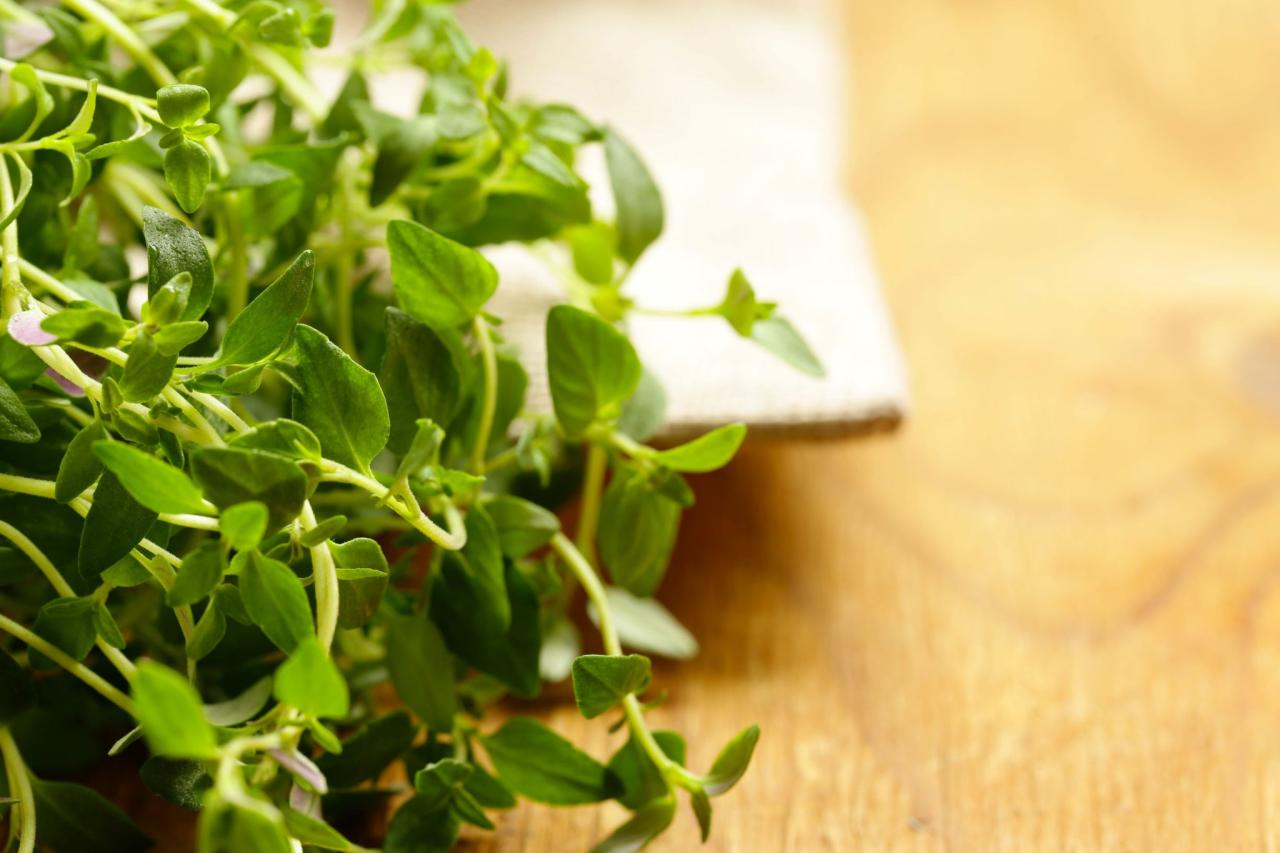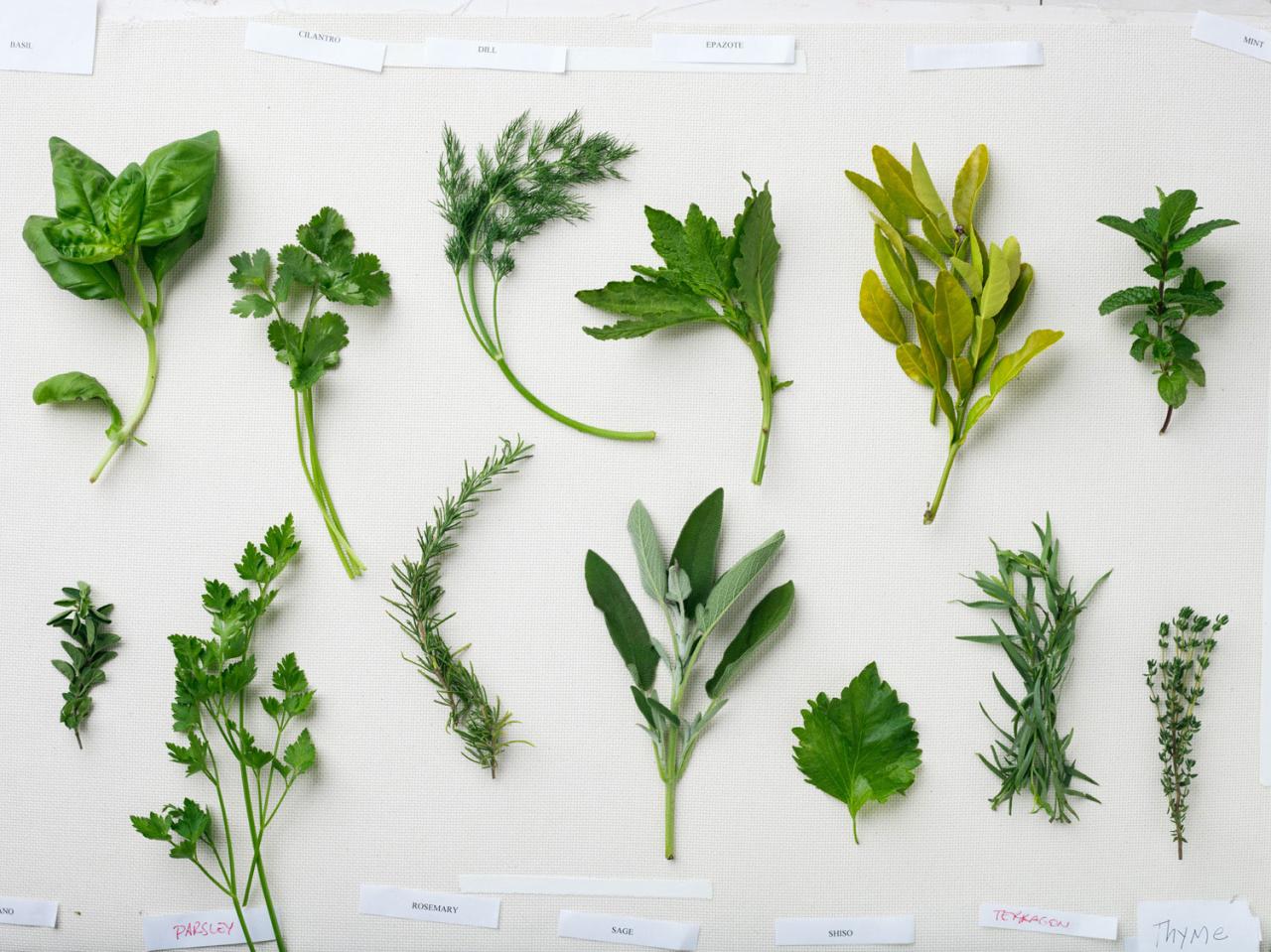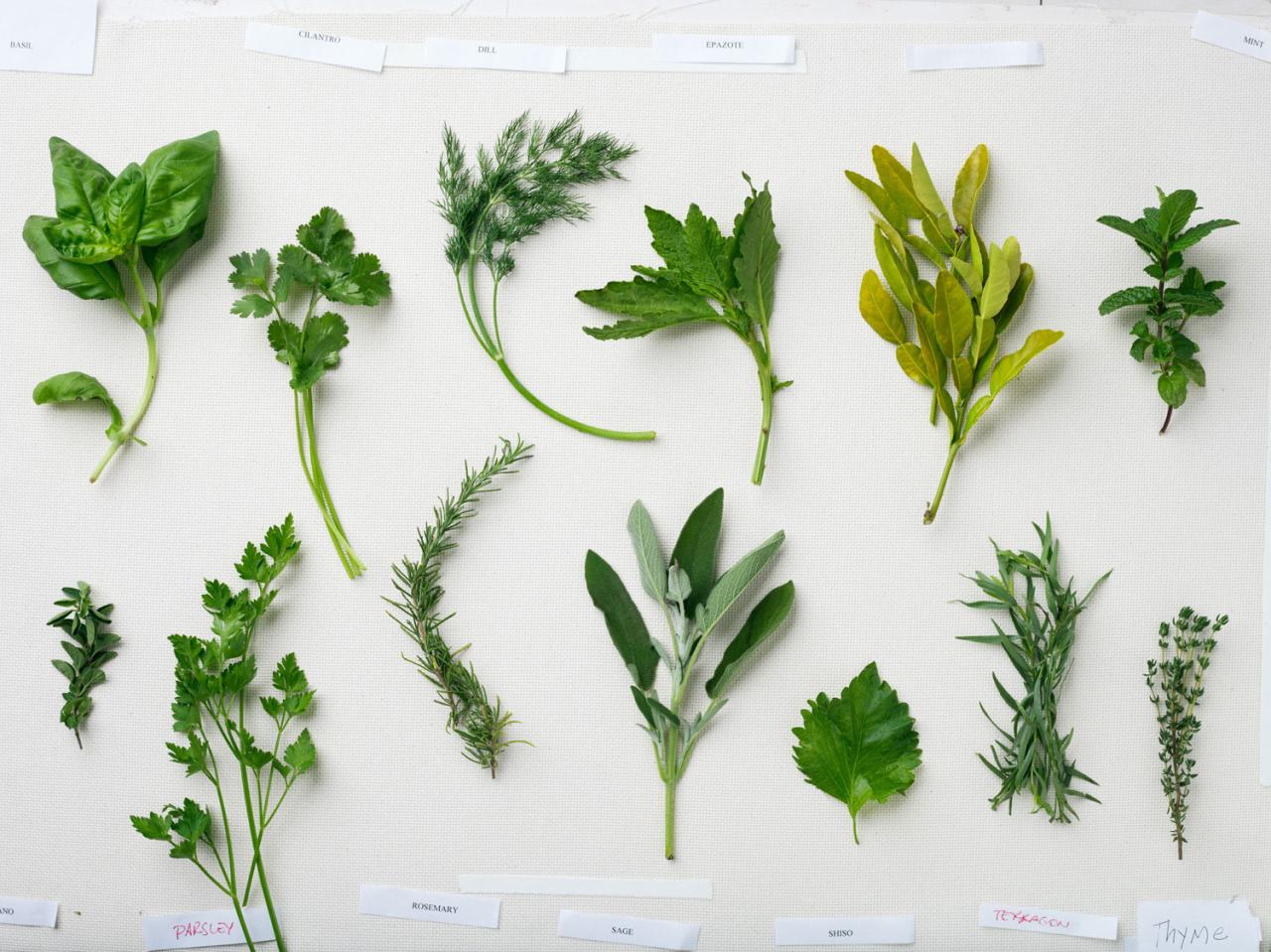Unlock the Power of Thyme Piece in Your Favorite Recipes – Unlock the Power of Thyme: Flavoring Your Favorite Recipes sets the stage for this enthralling narrative, offering readers a glimpse into a story that is rich in detail and brimming with originality from the outset. Thyme, a culinary gem with a rich history and diverse flavor profiles, has been a staple in kitchens around the world for centuries.
From its origins in the Mediterranean region to its widespread use in modern cuisine, thyme has captivated palates with its earthy, slightly peppery, and refreshingly aromatic notes. This versatile herb can elevate savory dishes, adding depth and complexity to everything from roasted vegetables to hearty stews.
This article delves into the fascinating world of thyme, exploring its history, varieties, and culinary applications. We will uncover the secrets behind its unique flavor and aroma, providing practical tips on selecting, storing, and incorporating thyme into your favorite recipes.
Prepare to be amazed by the transformative power of this humble herb as we unlock its potential to enhance your culinary creations.
Thyme
Thyme, a member of the mint family, is a culinary herb with a rich history and a distinctive flavor that has captivated cooks for centuries. Its aromatic leaves add depth and complexity to a wide array of dishes, from savory meat and vegetable preparations to refreshing beverages and sweet desserts.
History and Origin
Thyme’s journey through history dates back to ancient civilizations. Its use can be traced to the Egyptians, Greeks, and Romans, who prized it for its medicinal and culinary properties. The herb’s name, derived from the Greek word “thymos,” meaning “courage,” reflects its ancient association with strength and vitality.
Thyme has been cultivated for centuries, and its use has spread across the globe, becoming an integral part of diverse cuisines.
Varieties of Thyme
Thyme encompasses a variety of species and cultivars, each offering unique flavor profiles.
- Common Thyme (Thymus vulgaris) : The most widely cultivated thyme, it boasts a classic, pungent aroma and a slightly bitter flavor.
- Lemon Thyme (Thymus citriodorus) : Characterized by its citrusy aroma and flavor, this variety adds a bright and refreshing note to dishes.
- Caraway Thyme (Thymus herba-barona) : This variety exhibits a distinct caraway flavor, making it a suitable complement to hearty dishes.
- Silver Thyme (Thymus vulgaris‘Silver Queen’) : With its silvery-gray foliage and delicate flavor, silver thyme adds a touch of elegance to culinary creations.
Flavor and Aroma
Thyme’s flavor profile is characterized by a distinct blend of earthy, slightly bitter, and herbaceous notes. Its aroma is warm, pungent, and intensely aromatic, often described as reminiscent of the Mediterranean landscape. Thyme’s flavor intensity can vary depending on the variety, growing conditions, and time of harvest.
Selecting and Storing Fresh Thyme
When selecting fresh thyme, look for sprigs with vibrant green leaves and a strong aroma. Avoid wilted or yellowed leaves, as these indicate a decline in quality. To store fresh thyme, trim the stems and place them in a glass of water.
Alternatively, wrap the sprigs in a damp paper towel and store them in a plastic bag in the refrigerator. Thyme can also be dried for later use.
Thyme in Cooking

Thyme, a fragrant herb with a long history in culinary traditions worldwide, is a staple in kitchens for its ability to enhance savory dishes with a unique flavor profile. Its versatility allows it to be incorporated into various culinary creations, from simple everyday meals to sophisticated gourmet dishes.
Thyme’s distinct aroma and flavor add depth and complexity to any recipe, making it a must-have ingredient for both home cooks and professional chefs.
The Versatility of Thyme in Different Cuisines
Thyme’s culinary versatility extends beyond its use in traditional European dishes. It seamlessly integrates into various cuisines, adding a touch of sophistication and complexity to flavors. The following table highlights the diverse applications of thyme across different culinary traditions:
Cuisine |
Typical Thyme Applications |
|---|---|
French |
Chicken with Thyme and Lemon, Beef Bourguignon, Ratatouille |
Italian |
Tomato Sauce with Thyme, Roasted Vegetables with Thyme, Lamb Stew with Thyme |
Mediterranean |
Grilled Lamb with Thyme and Garlic, Roasted Chicken with Thyme and Rosemary, Fish Stew with Thyme and Saffron |
Middle Eastern |
Lamb Tagine with Thyme and Cinnamon, Chicken with Thyme and Sumac, Lentil Soup with Thyme and Mint |
Asian |
Stir-fries with Thyme and Ginger, Fish with Thyme and Soy Sauce, Mushroom Soup with Thyme and Shiitake Mushrooms |
Recipes Highlighting the Unique Flavor of Thyme
The following recipes showcase the unique flavor of thyme in different culinary applications:
Roasted Chicken with Thyme and Lemon
- Ingredients:
- 1 whole chicken
- 2 lemons, cut into wedges
- 2 tablespoons olive oil
- 1 tablespoon fresh thyme leaves
- Salt and pepper to taste
- Instructions:
- Preheat oven to 400°F (200°C).
- Place chicken in a roasting pan. Stuff the cavity with lemon wedges and thyme leaves.
- Drizzle chicken with olive oil and season with salt and pepper.
- Roast chicken for 1 hour and 15 minutes, or until internal temperature reaches 165°F (74°C).
- Let chicken rest for 10 minutes before carving and serving.
Tomato Sauce with Thyme
- Ingredients:
- 1 tablespoon olive oil
- 1 onion, chopped
- 2 cloves garlic, minced
- 1 (28-ounce) can crushed tomatoes
- 1 teaspoon dried thyme
- Salt and pepper to taste
- Instructions:
- Heat olive oil in a large saucepan over medium heat.
- Add onion and cook until softened, about 5 minutes.
- Add garlic and cook for 1 minute more.
- Stir in crushed tomatoes, thyme, salt, and pepper.
- Bring to a simmer and cook for 20 minutes, or until sauce has thickened.
- Serve over pasta, rice, or vegetables.
Fresh Thyme vs. Dried Thyme
While both fresh and dried thyme offer distinct flavors, their usage and intensity differ.
- Fresh thyme, with its vibrant green color and delicate aroma, delivers a more intense and nuanced flavor. It’s best used towards the end of cooking to preserve its delicate aroma.
- Dried thyme, on the other hand, is more concentrated and requires less quantity. It’s ideal for long cooking methods where its flavor can infuse into the dish gradually.
Thyme in Specific Dishes
Thyme’s versatility extends beyond its simple use as a flavoring agent. Its unique aroma and earthy notes seamlessly blend with various ingredients, creating complex and satisfying flavors in diverse culinary creations.
Roasted Vegetables
Thyme’s earthy and slightly bitter notes complement the natural sweetness of roasted vegetables, enhancing their depth of flavor. When roasted, thyme releases its aroma, infusing the vegetables with a warm, savory fragrance.
- Root Vegetables:Thyme pairs exceptionally well with root vegetables like carrots, potatoes, and parsnips. Its earthy notes enhance their sweetness, creating a balanced and comforting flavor profile.
- Asparagus:The delicate flavor of asparagus is beautifully complemented by the subtle bitterness of thyme.
Roasting asparagus with thyme brings out its vegetal sweetness and adds a hint of savory depth.
- Brussels Sprouts:Thyme’s earthy aroma cuts through the bitterness of Brussels sprouts, transforming them into a flavorful and enjoyable side dish.
Chicken and Poultry, Unlock the Power of Thyme Piece in Your Favorite Recipes
Thyme’s herbaceous notes and savory depth make it an ideal companion for chicken and poultry. Its aromatic qualities enhance the natural flavors of the meat, creating a symphony of taste.
- Roast Chicken:A classic combination, thyme’s earthy notes complement the richness of roasted chicken.
- Chicken Soup:Thyme adds a warm, comforting flavor to chicken soup, enhancing its savory depth and aroma.
- Stuffed Chicken Breast:Thyme’s flavor works well with various stuffing ingredients, adding a touch of herbaceous complexity to the dish.
Soups and Stews
Thyme’s earthy notes and ability to blend with various ingredients make it an essential herb for soups and stews. Its aroma adds depth and warmth, creating a comforting and flavorful base.
- Tomato Soup:Thyme’s earthy notes balance the sweetness of tomatoes, adding a layer of complexity to the soup.
- Beef Stew:Thyme’s savory depth complements the rich flavors of beef stew, enhancing its aroma and creating a comforting warmth.
- French Onion Soup:Thyme’s earthy notes enhance the sweetness of caramelized onions, creating a balanced and flavorful soup.
Seafood Dishes
Thyme’s subtle bitterness and herbaceous notes complement the delicate flavors of seafood. Its aroma adds a touch of complexity and depth to dishes, creating a harmonious blend of tastes.
- Grilled Salmon:Thyme’s earthy notes enhance the richness of grilled salmon, creating a savory and aromatic dish.
- Seafood Chowder:Thyme’s aroma adds a touch of warmth and complexity to seafood chowder, balancing the richness of the dish.
- Shrimp Scampi:Thyme’s herbaceous notes complement the garlic and lemon in shrimp scampi, adding a touch of earthy depth to the dish.
Pasta Sauces
Thyme’s earthy notes and ability to blend with various ingredients make it an excellent addition to pasta sauces. Its aroma adds depth and complexity, enhancing the overall flavor profile.
Unlocking the power of thyme in your favorite recipes goes beyond its fragrant aroma. This versatile herb can elevate your culinary creations while offering a wealth of health benefits. If you’re looking to enhance your well-being, consider incorporating biota herb into your diet.
This powerful herb, known for its potent antioxidant and anti-inflammatory properties, can complement the flavors of thyme and contribute to a healthier lifestyle.
- Tomato Sauce:Thyme’s earthy notes complement the sweetness of tomatoes, adding a layer of complexity to the sauce.
- Creamy Mushroom Sauce:Thyme’s herbaceous notes enhance the savory flavors of mushrooms, creating a rich and flavorful sauce.
- Pesto Sauce:Thyme’s earthy notes add a touch of complexity to traditional pesto sauce, balancing the sweetness of basil and pine nuts.
Beyond Flavor

Thyme’s culinary prowess is undeniable, but its benefits extend far beyond adding a delicious dimension to your dishes. This humble herb boasts a rich history of medicinal use, offering a treasure trove of potential health advantages.
Unlocking the power of thyme piece in your favorite recipes is about more than just adding flavor; it’s about understanding the nuances of herbs and their growth. Just as thyme thrives in well-drained soil, so too do African violets, and their propagation is a rewarding process.
For a comprehensive guide on how to cultivate these delicate beauties, check out Everything You Need to Know About Propagating African Violets , and then return to your culinary endeavors, armed with newfound knowledge about the intricate world of herbs.
Thyme’s Health Benefits
Thyme has been recognized for its potential health benefits for centuries. Its antioxidant properties are particularly noteworthy. Antioxidants help combat free radicals, which are unstable molecules that can damage cells and contribute to various health problems. Studies suggest that thyme’s antioxidants may help protect against chronic diseases like heart disease and cancer.
Thyme’s Medicinal Properties
Thyme’s medicinal properties have been explored in traditional medicine for generations. It has been used to treat a wide range of ailments, including respiratory issues, digestive problems, and skin conditions. Its antimicrobial and antifungal properties make it a valuable tool for fighting infections.
Thyme in Herbal Remedies and Teas
Thyme’s versatility extends to its use in herbal remedies and teas. Its essential oil is often extracted for use in aromatherapy, where it is believed to promote relaxation and improve mood. Thyme tea is a popular remedy for coughs, colds, and sore throats.
Its soothing properties can help ease respiratory discomfort and provide relief from symptoms.
Final Thoughts
Thyme, a culinary gem with a rich history and diverse flavor profiles, has been a staple in kitchens around the world for centuries. From its origins in the Mediterranean region to its widespread use in modern cuisine, thyme has captivated palates with its earthy, slightly peppery, and refreshingly aromatic notes.
This versatile herb can elevate savory dishes, adding depth and complexity to everything from roasted vegetables to hearty stews. By understanding the different varieties of thyme, their unique flavor profiles, and the best ways to incorporate them into your cooking, you can unlock a world of culinary possibilities.
So, embrace the power of thyme and elevate your dishes to new heights of flavor.
FAQ Section: Unlock The Power Of Thyme Piece In Your Favorite Recipes
What is the best way to store fresh thyme?
To preserve the freshness of fresh thyme, store it in a sealed container in the refrigerator for up to a week. You can also freeze fresh thyme by placing it in a freezer bag and storing it for up to 6 months.
Can I use dried thyme instead of fresh thyme?
Yes, you can use dried thyme as a substitute for fresh thyme, but keep in mind that dried thyme is more concentrated. Use about 1/3 the amount of dried thyme as you would fresh thyme.
What are some other herbs that pair well with thyme?
Thyme pairs well with a variety of other herbs, including rosemary, oregano, sage, and parsley. These combinations can create complex and delicious flavor profiles in your dishes.
